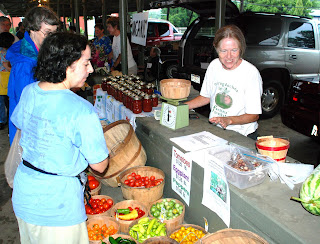Farechild's Restaurant to open in late September




Clockwise, from upper left photo:
-- County Commissioner Charlie Simmons hugs Shelley Brophy.
-- Shelley smiles as NEDCO chair Stan Sisco points out her mother, Peggy Fare.
-- Shelley, right, celebrates with her mother Peggy Fare, and Commissioner Simmons as Jerry Alexander, left, waits to congratulate her.
-- From left, NEDCO Chair Stan Sisco, NEDCO Vice President Donna Maisel, Peggy Fare, Shelley Brophy and Chris Brophy. Photos: Bruce R. Partain
(Click on photos for larger image.)
Shelley Brophy, owner of Shelley's Bakery Cafe', announced today that she will open another restaurant - Farechild's - at 1411 North Street by late September.
The prairie style building is the former home of Sam Hayter. The beautiful 10,000 square foot structure once housed La Hacienda and later The Hayter House restaurants.
Brophy will continue operation of Shelley's Bakery Cafe' at 112 North Street, and will continue that restaurant's catering services.
Farechild's "will offer a menu of primarily steaks and seafood," she said. The new restaurant will be open for lunch and dinner and may eventually offer a Sunday brunch.
NEDCO chair Stan Sisco thanked Brophy for the impact that 80 new jobs will have on the economy. An online application will be available at http://www.farechilds.com/ by Friday, August 3.
Ms. Brophy will be involved in day-to-day operations at both restaurants.
"With the assistance of Lee Danis & Associates and NEDCO, I am very fortunate to acquire this facility that has played such an important part in the history of East Texas," Brophy said.
The name "Farechild's" is a reference to Brophy's maiden name - Fare. She is the daughter of artist Peggy Fare. She is ably assisted by her staff, which includes 15-year-old son, Chris Brophy.
5 5 5 5 5 5 5 5 5 5 5 5 5 5 5 5 5 5
Following from pictures-of-historic-nacogdoches website:
The Sam Hayter House, built in 1913 by Nacogdoches architect Diedrich Rulfs, is an example of the Prairie Style of architecture, a unique, indigenous American creation that developed in its purest form in the Chicago Suburbs of Oak Park and River Forest in the period between 1890 and 1915 through the ideas of Louis Sullivan, ("Form Follows Function"), and the early works of Frank Lloyd Wright, acknowledged master of the Prairie house, who declared "A New Reality based on Space rather than Matter."

 Pictured from left: Gregg Nichols, Sue Miller, Jan Dawley, Teresa Darby, Carol Thomson and Ron Collins.
Pictured from left: Gregg Nichols, Sue Miller, Jan Dawley, Teresa Darby, Carol Thomson and Ron Collins.







 From left, Chamber President/CEO Bruce Partain with Citizens 1st Bank Sr. Vice President Chris Sidnell, Sr. Vice President Cory Beasley, Sr. Vice President/Controller Rick Harrison and Sr. Vice President and Chamber Chair Elect Kim Luna Snyder.
From left, Chamber President/CEO Bruce Partain with Citizens 1st Bank Sr. Vice President Chris Sidnell, Sr. Vice President Cory Beasley, Sr. Vice President/Controller Rick Harrison and Sr. Vice President and Chamber Chair Elect Kim Luna Snyder. Above from left: Meeting facilitator Charlie
Above from left: Meeting facilitator Charlie 













